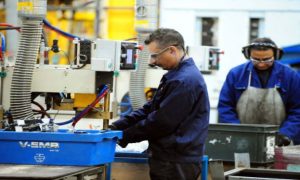The last 2 years have been rough on the American economy. No one has felt the sting of the Covid 19 pandemic more than small business owners.
Also Read – Whole Foods will stop buying Maine lobster
All across the country, the small mom-and-pop businesses have suffered from dwindling workers and skyrocketing inflation. In many towns, it is not uncommon to see once bustling businesses shuttered and a for sale sign in the window.
Cause And Effect
When Covid-19 hit, the world panicked, and the US joined right in. Economies quickly began to see massive swings, and supply chains were interrupted. As everyone waited to see what was going to be done to save us from what was billed as a disease that could annihilate our population, talking heads began to formulate a plan they claimed would help us save our economy.
The US government began to announce mask mandates that reached from federal levels to local municipalities, along with a widespread shutdown of businesses across the country. This shutdown extended much longer than anyone initially thought it would, and the pain of a financial crisis began to set in.
In answer to this, the federal government announced its plan to send out stimulus checks to taxpayers. USA.gov reports the first round of these checks was a $1,200 payment sent out in April 2020. For many people who had been ordered not to work, this was a lifesaver in a tumultuous sea of financial instability.
The second round was sent out in December 2020 and January 2021, consisting of $600. Once again, it was met with open arms.
The third round of payments hit taxpayers’ bank accounts in March of 2021 and contained a whopping $1,400.
While taxpayers were extremely happy to receive the payments, most did not understand the implications that big spending by the government would have on their long-term financial well-being.
Labor Shortage
When the second and third round of stimulus checks hit the banks, millions of Americans left their jobs as waitresses, cooks, dishwashers, and cashiers. All were hoping to find something better, and now they finally had some money in the bank and time to look for it. Small businesses in America began to experience a labor shortage that we have never seen in modern times.
Business after business shuttered their doors for good in the wake of Covid 19 due to the fact they could not find enough employees to staff the workplace. CNN reports that America’s small businesses are running out of workers.
Supply Chain Issues
Supply chains were also in shambles during and after the initial outbreaks of Covid, leaving many small businesses unable to source the products they needed to serve their customers. America saw major shortages of everyday staple goods like toilet paper, dairy and meat products, and other food products.
Gas shortages were feared as well due to the fact that many truck drivers refused to drive during the pandemic for fear of being exposed to the virus. Prices shot up as refining costs increased and imports slowed. All of this contributed to further supply chain issues, further hampering small businesses.
Demand For Higher Wages
While there has been a demand for higher wages from industries like food service for quite some time, in the wake of Covid, it has become even more pronounced. In an August 2022 report, USA Today stated that food service wages now rival skilled labor jobs in the amount they pay. This means small businesses are paying more in order to retain workers
Building Back Better
So, how do you combat higher cost for workers, supplies, and operations in order to survive as a small business owner?
First of all, take stock of your current situation. Pull out your books and look at profit and loss over the last 2 years, and see where you are at. Without knowing the facts regarding how much you spend versus how much profit you bring in, you can’t make wise decisions going forward. Once you have the numbers in front of you, find out where you can trim out excess spending without cutting corners on customer service. Reducing wasteful spending might put a large sum of money back in the budget for more necessary things.
Second, go back over your business plan and goals. What may have worked prior to Covid 19 may no longer be feasible in an inflated economy with a shortage of workers. It might be time to revise or even completely scrap your old plan and start fresh. Look at how some of your competitors are doing things and get some ideas of how you can improve your business and its finances.
You may also need to consider taking out a loan in order to fully revamp your business post-Covid. There are many different options available, according to Forbes, that will give you the financial strength you need to set your business up for success in the future.
You need to set reasonable goals for the rebuilding process. This is not something your business will recover from within a few weeks, and planning for the long haul is the key to success moving forward.
Also Read – Verdict in Trump Organization Trial Could Come Down to 3 Little Words
Be Prepared
Now that we have seen firsthand what a modern recession looks like, it is time to take action to safeguard ourselves against a future event. Future-proofing your business by making sure you have savings, ensuring you can provide employee stability, and planning ahead for supply chain disruptions could be the difference between owning a successful business and placing a for-sale sign in your shop window. Take a look at all the ways your business was impacted by Covid and then create a contingency plan to combat those effects. This will help you be better prepared should another event like this occur.
There is hope after Covid 19. Small businesses can survive and even thrive going into the future. The key is to understand the potential pitfalls and then insulate your business against them.









































